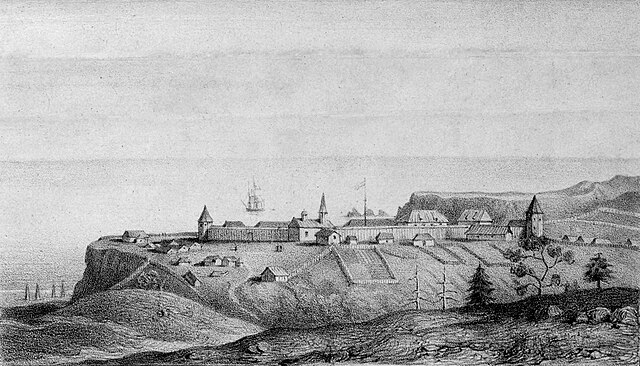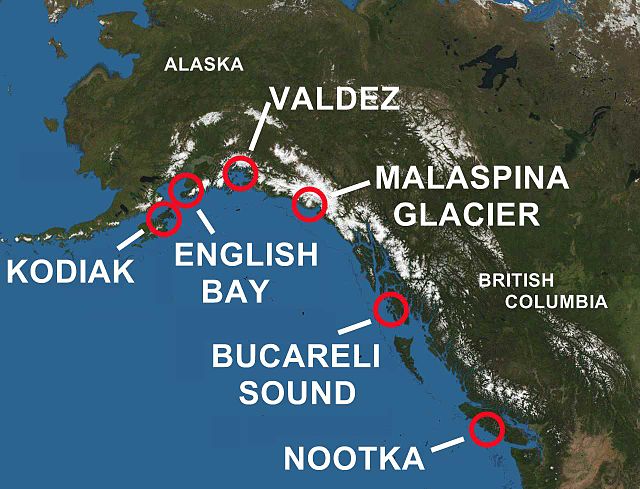Fort Ross is a former Russian establishment on the west coast of North America in what is now Sonoma County, California. It was the hub of the southernmost Russian settlements in North America from 1812 to 1841. Notably, it was the first multi-ethnic community in northern California, with a combination of Native Californians, Native Alaskans, Russians, Finns, and Swedes. It has been the subject of archaeological investigation and is a California Historical Landmark, a National Historic Landmark, and on the National Register of Historic Places. It is part of California's Fort Ross State Historic Park.
Fort Ross, California
A view of Fort Ross in 1828 by A. B. Duhaut-Cilly. From the archives of the Fort Ross Historical Society
Settlement Ross, 1841, by Ilya Gavrilovich Voznesensky
Southwest blockhouse, with the well in the foreground
History of the west coast of North America
The human history of the west coast of North America is believed to stretch back to the arrival of the earliest people over the Bering Strait, or alternately along a now-submerged coastal plain, through the development of significant pre-Columbian cultures and population densities, to the arrival of the European explorers and colonizers. The west coast of North America today is home to some of the largest and most important companies in the world, as well as being a center of world culture.
Vasco Núñez de Balboa claiming possession of the Pacific Ocean and the lands that touch it.
Spanish contact in British Columbia and Alaska
A billboard for a marijuana dispensary in Washington. Washington was one of the first two states to legalize the plant, and California is home to the largest cannabis producing region in the country.







